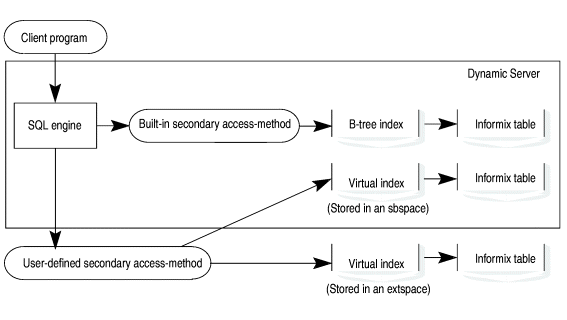Seamless use of SQL
With the aid of a user-defined secondary access method, an SQL statement can use one or more indexes.
Further, with the aid of a user-defined secondary access
method, indexes can provide access to the following extended data:
- User-defined types
- Data inside a smart large object
- External data sources
- Nonrelational data
In addition, with the aid of a user-defined secondary
access method, an index can contain any of the following key types:
- Return values from a user-defined function
- Approximate values such as stem words for a full-text search
- Attributes of data such as length
- Relative position to other data in a hierarchy or area of space
The end user can use SQL to access both HCL Informix® data
and virtual index data. A virtual index requires a user-defined
access method to make the data in the index accessible to Informix. In the
following figure, a single application processes Informix data
and virtual data in an external location and smart-large-object storage.
Figure 1. An application using
a secondary access method
